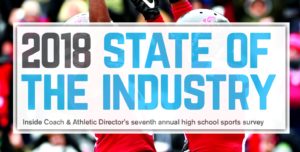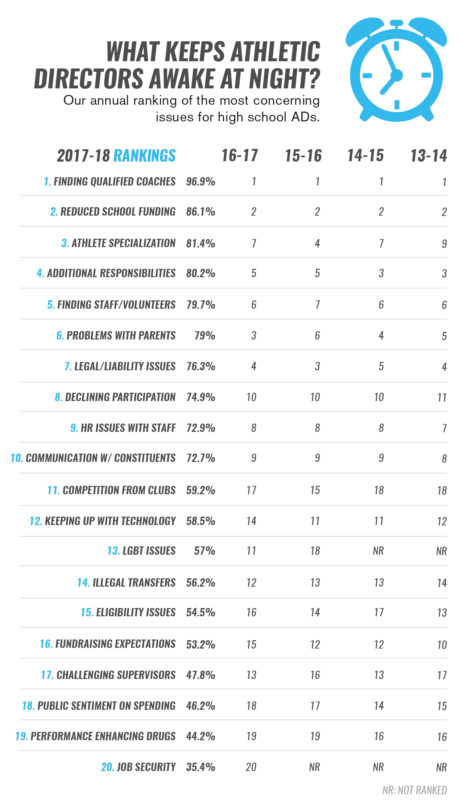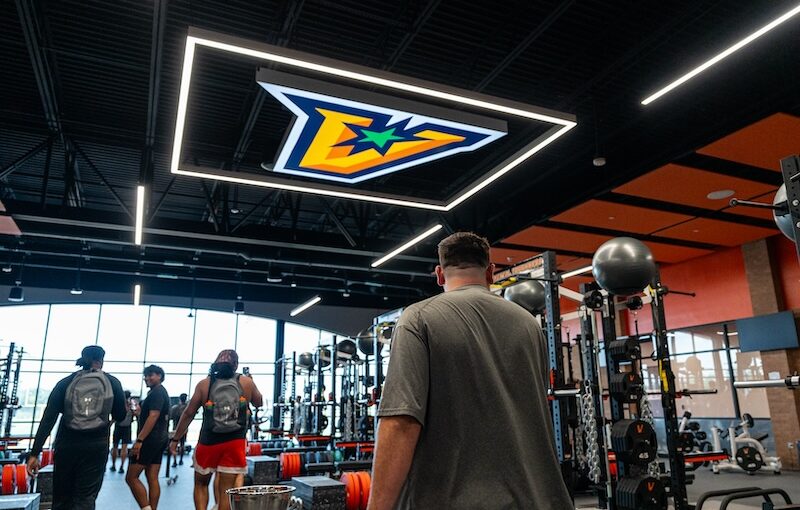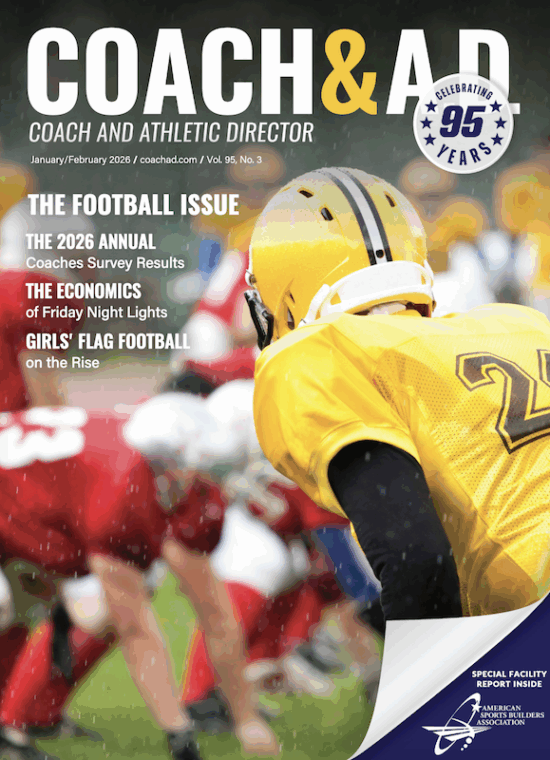Breaking down the top five concerns of athletic directors
High school athletic programs are finding more financial stability, but challenges still lurk as participation grows and the pool of qualified coaches shrinks.
This is the seventh year of Coach & Athletic Director’s survey of high school athletic administrators. The results help us develop and our editorial vision, while offering readers a glimpse at the opportunities and challenges in prep sports.
 When we first commissioned our survey in 2011, athletic departments were struggling. Drastic cuts to public school budgets forced athletic directors to drop many programs, and fewer teachers showed interest in coaching. During the last two years, our survey showed signs of improvement as athletic budgets began to rebound.
When we first commissioned our survey in 2011, athletic departments were struggling. Drastic cuts to public school budgets forced athletic directors to drop many programs, and fewer teachers showed interest in coaching. During the last two years, our survey showed signs of improvement as athletic budgets began to rebound.
This year’s survey continues that trend, with roughly one in five schools reporting increases in their athletic budgets. More schools are planning capital projects, but fundraising remains a critical component of athletic departments everywhere.
Part of our annual survey focuses on the major concerns of high school athletic directors. Finding qualified coaches remains the No. 1 headache for administrators, but new challenges like competition from club sports has climbed the list.
Click here for all results of our 2017-18 State of the Industry survey. Here’s a look at athletic directors’ top five concerns.
 1. Finding qualified coaches.
1. Finding qualified coaches.
Consistently ranked as the top concern among high school athletic directors, finding qualified coaches to lead student-athletes has been a tremendous struggle.
Though many schools have successfully found great coaches outside of their walls, most athletic directors would prefer to hire teachers to lead their sports programs. But funding issues led to a decline in coaching stipends, and teachers started to decide it was no longer worth putting in the extra hours with little compensation.
More schools are hiring non-teacher coaches as a result. Athletic directors say the biggest issue with non-teacher coaches is it can be difficult to make them understand the education-based athletics philosophy. Some just want to win, and other times, they are not interested in teaching the lessons that serve students beyond their high school years.
When it comes to compensation, athletic directors believe school districts need to make the job worthwhile.
“Coaching stipends need to have a system that gives an increase to coaches for saying on the job for a longer period of time,” said one athletic director. “Parent expectations are way too high and put undue pressure on the coaches.”
2. Reduced school funding.
Our survey showed nearly one in four schools increased their athletic budgets, but what about the other 75 percent? Almost 20 percent of schools saw their budgets decrease, and though 58 percent had no movement, budgets are still too depleted to adequately run the athletic program.
In our survey, athletic directors cited a variety of problems — economic instability, rising transportation costs, facilities expenses. Many have turned to fundraising for help, but families are also struggling and have little to offer.
“Funding for our program continues to shrink,” one athletic director said. “And there is not as much support from the community that we need to run a quality program.”
“Funding needs to (improve),” said another athletic administrator. “Athletic programs are being cut everywhere, and we have more than 80 percent of our student body associated with athletics. That means a large number of kids are affected.”
3. Athlete specialization.
Athletic directors want students playing multiple sports, but not everyone shares their vision.
Athletic administrators, and most coaches, complain that the rise of club sports and private coaches directly relates to the growing number of specialized athletes. Parents become convinced that a single-sport focus increases their child’s chances of landing a college scholarship and, as a result, they spend thousands of dollars on personal training. High school coaches also say that club coaches convince athletes to drop interscholastic sports for travel teams, getting the athletes more exposure to college recruiters.
In 2017 alone, four new scientific studies concluded that specialization does more harm than good. One of those studies, published by the Orthopedic Journal of Sports Medicine, found that specialization increased the risk of serious injuries in professional baseball players. Researchers said the results also apply to other sports.
“Parents need to understand that too much of anything can have a detrimental effect on us, and always keep that in the back of the mind,” researcher Dr. John Deitch said in the Journal.
 4. Additional responsibilities.
4. Additional responsibilities.
In the midst of a budget crisis school districts cut jobs, but they didn’t cut responsibilities. Someone had to pick up the slack.
According to our survey, athletic administrators inherited a lot of those responsibilities, sometimes teaching new classes, coaching teams or taking on dual roles as a vice principal. The athletic director job on its own can be too much for a single person, so those asked to do more are feeling the stress.
“(I’m concerned) about the time constraints and additional requirements for the athletic director,” one respondent said. “The solution would be for principals and school board reps to be more understanding and provide flexibility for athletic directors and limit their duties outside of athletics.”
5. Finding staff/volunteers.
Oftentimes, parents of athletes are more than happy to help out at events, but that’s not always the case. And it can be a headache for athletic directors.
Athletic programs count on volunteers and part-time staff for jobs like concession stands and ticket booths. But it’s increasingly difficult to find volunteers willing to give up an entire weekend to help put on a tournament. It’s even more challenging for sports like wrestling, tennis or volleyball that don’t carry numbers similar to a football team. That can put athletic directors in a difficult situation.
One solution: Have coaches require parents to staff a specific number of events each year. Give them something in return, like spirit wear, and at the end-of-the-season banquet, recognize the parents who sacrificed the most time for your program. Coaches and athletic directors must get creative and provide incentive to get parents and other volunteers involved.





